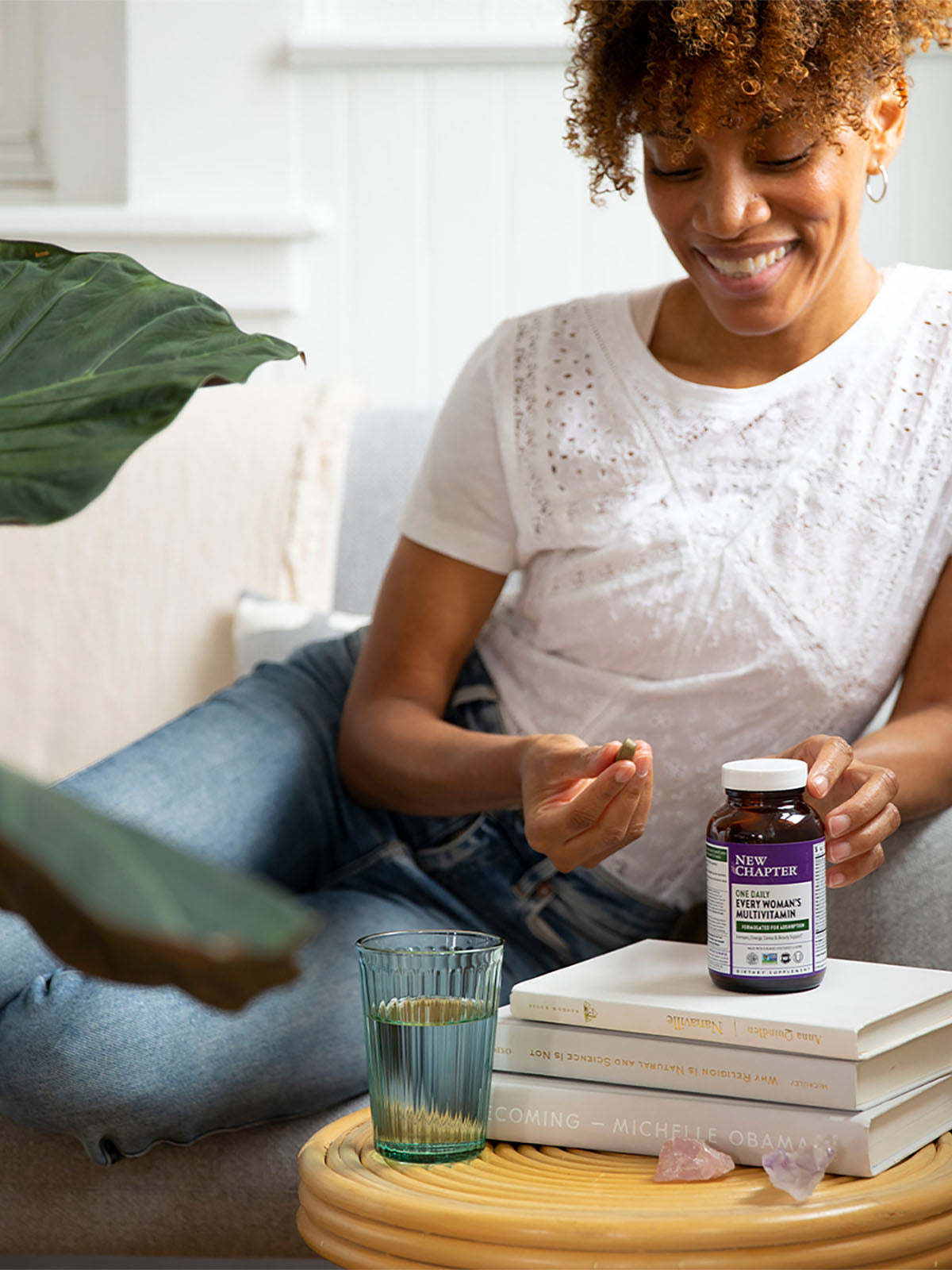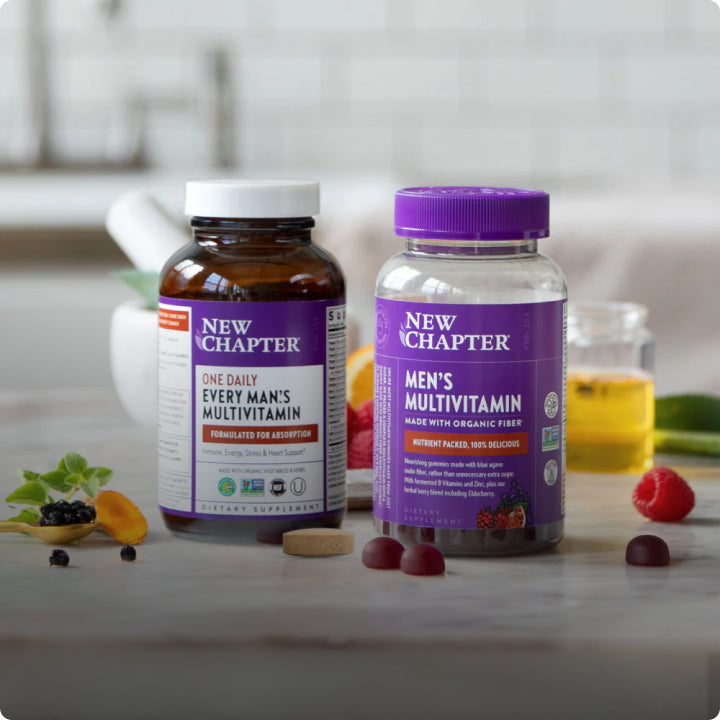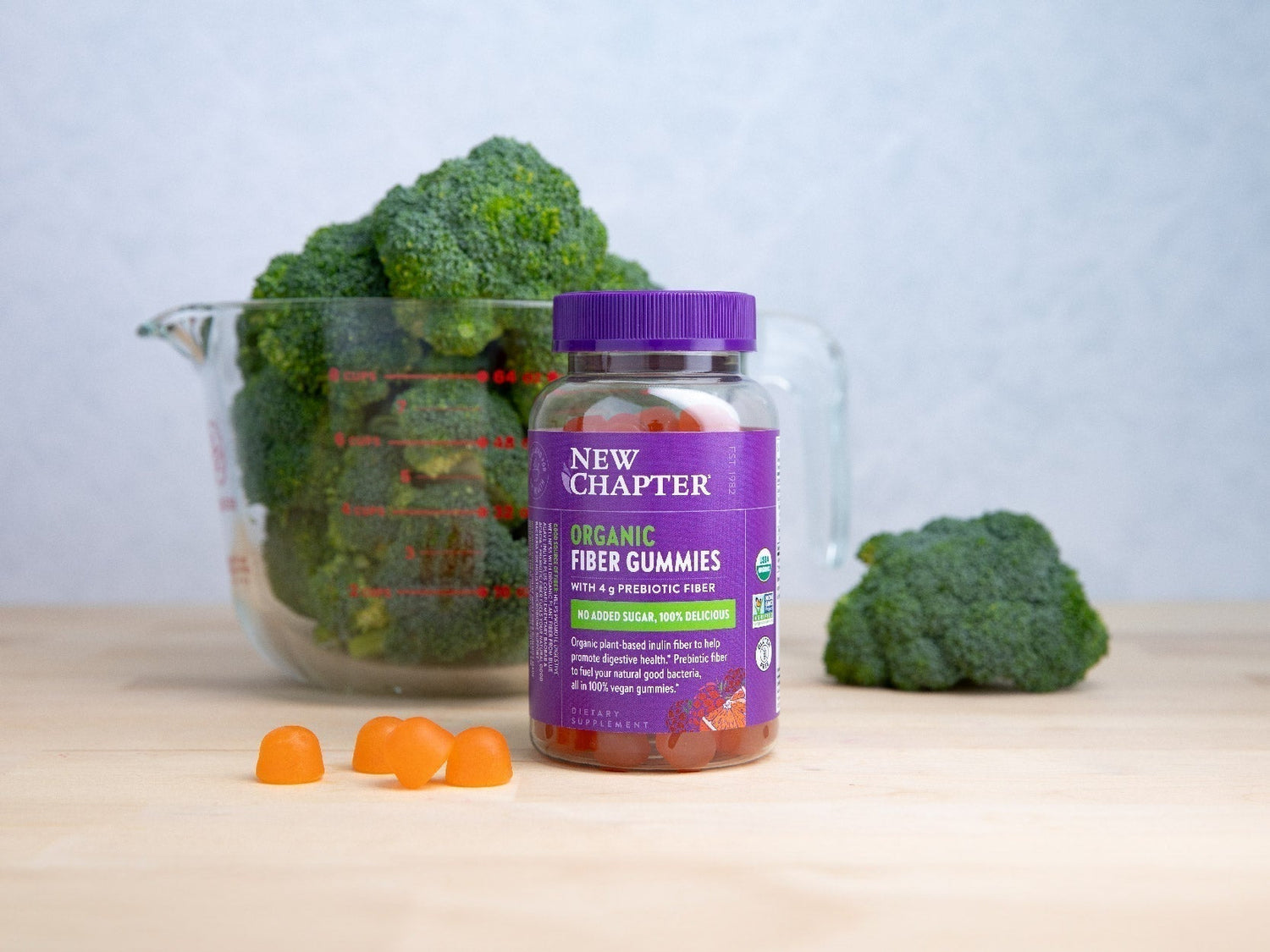Did you know only about 7% of Americans are getting enough fiber in their diets, according to a study of over 14,600 adults? That means the majority of us need to increase our fiber intake. But what is dietary fiber anyway, and why is it important to get enough?
Touring the Digestive System
Before we dive into all things fiber, let’s tour the amazing digestive system. From top to bottom, your digestive system helps your body break down and absorb food to get the nutrition you need each day. There are two main parts of the digestive system: the GI (gastrointestinal) tract and the biliary system.
- The GI tract is a series of connected organs that run from “top to bottom.” It’s made up of your mouth, esophagus, stomach, small intestine, large intestine, and anus. As you can imagine, this is where your food gets processed and digested. Your small intestine, the longest section, is where food nutrients are absorbed into the bloodstream. These include amino acids, fatty acids, simple sugars, vitamins, minerals, and water. The large intestine also absorbs vitamins, minerals, and water.
- The biliary system provides bile and enzymes to the GI tract. These deliver compounds that help break down your food. The biliary system includes the liver, gall bladder, and pancreas.
Fun fact: The GI tract is teeming with living microorganisms or “gut flora.” These microscopic good bacteria are essential for helping to digest your food.
Dietary Fiber is Essential for Digestion!
In addition to needing bacteria, bile, and enzymes to work properly, your digestive system needs adequate fiber. Fiber is a carbohydrate that comes from food or from fiber supplements. But it’s not digested and absorbed into the bloodstream like other food compounds. Instead, fiber provides bulky material to help form stool that’s a healthy, comfortable consistency. This helps with smooth, regular bowel movements. Fiber also acts like a broom, scrubbing your digestive tract as it passes on through. You can think of fiber as being like the clean-up crew that sticks around after the show, making sure the venue is swept and the trash is put out.
- Soluble fiber dissolves in water to form a gel-like material. It can help with feeling full when eating. It’s also a prebiotic that feeds your natural good bacteria.
- Insoluble fiber does not dissolve in water. Sometimes called “roughage,” this type of fiber promotes the movement of material through your digestive system and increases stool bulk.
Recommended Amounts of Fiber
Getting enough fiber is so important for healthy eating that it’s part of the Dietary Guidelines for Americans, right alongside macronutrients like protein and carbs.
What are the fiber guidelines?
The goal for fiber intake is to get 14 grams of fiber for every 1000 calories consumed. Experts say soluble fiber should be about ¼ of your total fiber intake.
So, how much fiber a day?
Let’s make that fiber math easier! The Dietary Guidelines for Americans give the following recommendations for specific age groups.
| If you are: | Recommended daily fiber: |
| Adult female age 19–30 | 28 grams |
| Adult male age 19-30 | 34 grams |
| Adult female age 31-50 | 25 grams |
| Adult male age 31-50 | 31 grams |
| Adult female age 51+ | 22 grams |
| Adult male age 51+ | 28 grams |
Amounts from Dietary Guidelines for Americans 2020-2025
Health Benefits of Fiber
Dietary fiber has multiple health benefits, whether you get the fiber from healthy eating or by adding supplements. Getting adequate fiber can help prevent or relieve constipation and support regular bowel movements. High fiber intake has also been linked to positive effects on blood sugar balance, weight management, and healthy cholesterol levels. Researchers are continuing to investigate how dietary fiber works in the body, including how fiber supports a healthy, vibrant microbiome.
Sources of Dietary Fiber
The reason many Americans don’t get enough fiber is the same reason we don’t get enough of key vitamins and minerals—we don’t eat enough plants! Fruits, vegetables, and whole grains are the main sources for soluble and insoluble fiber. Looking to increase your high-fiber food intake? Here are tips from the American Academy of Family Physicians:
- Choose whole grains more often. Options include whole-wheat bread, brown rice, quinoa, oatmeal, popcorn, and products with bran.
- Eat at least 2 cups of fruit every day. This could include apples, pears, citrus, berries, guava, persimmons, peaches, dates, cherries, and kiwifruit.
- Eat over 2 cups of vegetables every day. This can include legumes such as beans or peas, dark leafy greens, broccoli, cauliflower, winter squash, sweet potato, and carrots.
- Nuts and seeds also have fiber, such as chia seeds, pumpkin seeds, almonds, and walnuts. Try them as snacks or add them to other dishes.
- The Nutrition Facts panel on foods is required to list dietary fiber under “Total Carbohydrate.” Check food labels for fiber information as you shop, to make sure you’re picking more fiber-rich options.
Best Fiber Supplements
Did you know that the recommended 25 grams of daily fiber for women is the equivalent of eating NINE cups of broccoli? Fiber supplements are products you can take to get extra fiber in your diet. They make it easy to fill in gaps if you’re not able to track the grams of fiber you get from food each day.
Sources of Fiber in Supplements
Fiber supplements are made from different ingredients. Some use fibers that come naturally from plants, and some include fiber that is synthetically made.
Here are common ingredients used in fiber supplements:
- Inulin. This is a type of soluble fiber that comes from the roots of plants like chicory, Jerusalem artichoke, and agave. It can act as a prebiotic to feed the good bacteria in your gut and support digestive health. This is the main type of fiber in New Chapter’s Organic Fiber Gummies (we also add baobab & acacia plant fibers).
- Psyllium. This is a type of soluble fiber that comes from the husk of a plant called Plantago ovata. It dissolves to form a gel-like substance in the GI tract.
- Methylcellulose. This type of synthetic fiber is derived from cellulose, a sugar found in plant cells. It can absorb water and help bulk up stool.
- Polydextrose. This is a soluble fiber derived from sugar. It is used as a sweetener in addition to being a fiber additive.
- Flaxseed. This is a whole food source of both soluble and insoluble fiber.
- Chia seed. This is also a whole food source of soluble and insoluble fiber.
These are some of the main ingredients used to make fiber supplements, but there are other sources as well. You can always check the label of any supplement you buy for information on what it contains and how much fiber you get per serving.
Forms of Fiber Supplements
There are several forms of fiber supplements available. The best fiber supplement for you may depend on your personal preferences and health goals. Some forms of fiber supplements are:
- Gummies: Gummies are chewable fiber supplements that often contain inulin or other prebiotic fibers. Prebiotics are substances that feed the beneficial bacteria in the gut and support digestive health. Gummies can be a convenient and tasty way to increase fiber intake, especially for children or people who don’t like the taste or texture of powders. New Chapter Organic Fiber Gummies are formulated with inulin fiber from Blue Agave and are 100% delicious with no added sugar!
- Powders: Powders are the most common type of fiber supplement. They usually contain soluble fiber, such as psyllium or inulin, that dissolves in water or other liquids. Powders can be mixed with water, juice, smoothies, or food.
- Capsules: Capsules are fiber supplements that come in pill form. They usually contain insoluble fiber, such as methylcellulose. Capsules can be swallowed with water and are useful for people who have difficulty mixing or consuming powders or gummies.
Do I Need Probiotics with My Fiber?
We know fiber is good for digestion and probiotics are good for digestion, so you may wonder whether you can take both. The short answer is yes! Fiber and probiotics can work together to support a healthy, balanced gut microbiome, which is critical for digestive and overall health. Fiber, especially soluble and prebiotic types, can act as fuel for the growth of beneficial bacteria in the gut. Probiotic supplements can add healthy flora to the gut environment, providing reinforcements for the microorganisms you already have.
Some natural foods already contain both probiotics and fiber, such as sauerkraut and kimchi. Looking to add both supplements to your routine? It’s best to start slowly and drink plenty of water each day to help things move along in the GI tract. If you have specific health needs, check with your healthcare provider for information about the best fiber or probiotic supplements for you.
Get into the Fiber Habit!
In conclusion, fiber is essential for daily healthy eating patterns. One researcher wrote that increasing fiber intake should be considered a “ public health priority” given its benefits and links to longevity. Here are 3 top reminders about adding fiber to your routine.
- Take it slow! If you’re adding Organic Fiber Gummies to your routine, you can start with just one a day for a week or so. Then slowly work your way up to a full serving of two gummies that can be taken once or twice a day.
- Drink lots of water to help your GI tract use the fiber properly.
- Eat a variety of high-fiber foods, such as whole grains, fruits, veggies, and legumes. The body loves whole food nutrition most of all!
If you want to learn more about probiotic supplements, check out our dedicated blog about probiotic benefits and options.
Written by Katherine Innis







